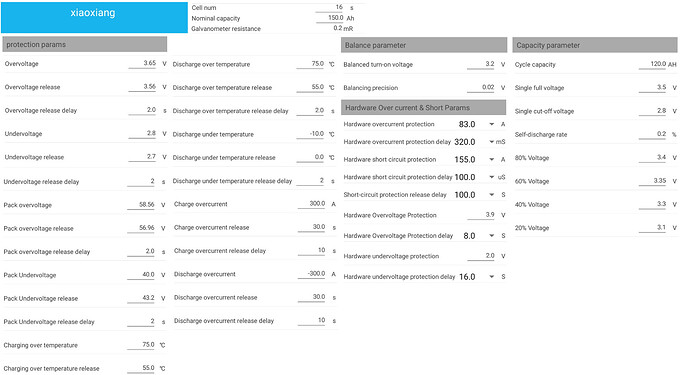My case is different to yours. ( I am going to have cells in parallel and in series).
So I’ll talk about what I think yours is - just a single series bank.
I haven’t bought an EVE cell with all the certs and charge/discharge curves, but it sounds like those documents are supplied in your imminent purchase.
So, If I was you, I’d look at all the curves and determine the base voltage of the upper knee point of the single-cell with the lowest upper knee point.
(The cell most likely to be damaged first at the upper charge voltage - I hope that makes sense to you).
And then multiply by 18 to determine an overall max charge voltage.
I would repeat the exercise to determine the highest knee point base of the weakest cell and also multiply by 18.
(The cell most likely to be damaged first at the lower charge voltage).
This will determine the overall low end cut out charge voltage.
Then apply a small safety margin at each end on top of that.
I have a gutfeel this may result in a max cell voltage just shy of 3.4V, but don’t hold me to that, the curves will decide.
In my own case, as I have the test equipment, I won’t just work from documents, I’ll determine the curves for myself. Or at least do some random cells to determine if I can trust the documentation.
If I can trust the documentation, I’ll do the same thing, but added to it I’ll pay attention that any cells I parallel will have as near as dammit identical curves and internal resistances.
If I can’t trust the documentation, or think I can benefit from doing my own curves I’ll do my own curves.
I’ll reject any outliers.
Again from the mean of the curves, I’d guesstimate my most probable daily operating voltage and initially connect all cells in parallel and balance them at that voltage.
Possibly as years go by, as hopefully, they should, I might test a random cell to determine any drift.


